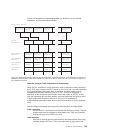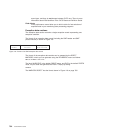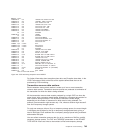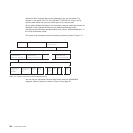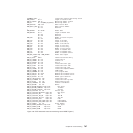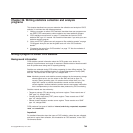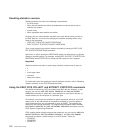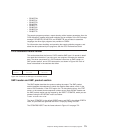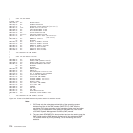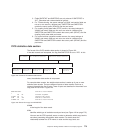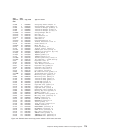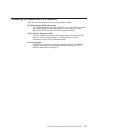
v DFH0STGN
v DFH0STLK
v DFH0STPR
v DFH0STSY
v DFH0STTP
v DFH$STAS
v DFH$STCN
v DFH$STTB
The sample programs produce a report showing critical system parameters from the
CICS dispatcher, together with loader statistics and an analysis of the CICS storage
manager. DFH$STAS, DFH$STCN, and DFH$STTB are provided in assembler
language; the other eight programs are provided in COBOL.
For information about installing and operating the sample statistics programs, and
about the data produced by the programs, see the CICS Performance Guide.
CICS statistics record format
This section describes the format of CICS statistics SMF type 110 records in detail.
You need this information if you write your own program to analyze the statistics
data. The three components of a CICS statistics record are an SMF header, an
SMF product section, and a CICS data section, as shown in Figure 120. Each of
these is described in the sections that follow.
SMF header and SMF product section
The SMF header describes the system creating the output. The SMF product
section identifies the subsystem to which the statistics data relates, which, in the
case of CICS statistics, is the CICS region, the TS data sharing server, the CFDT
server, or the named counter sequence number server. Both the SMF header and
the SMF product section can be mapped by the DSECT STSMFDS, which you can
generate using the DFHSTSMF macro as follows:
STSMFDS DFHSTSMF PREFIX=SMF
The label ‘STSMFDS’ is the default DSECT name, and SMF is the default PREFIX
value, so you could also generate the DSECT simply by coding DFHSTSMF.
The STSMFDS DSECT has the format shown in Figure 121 on page 772.
SMF SMF Product CICS Data
Header Section Section
Figure 120. Format of an SMF type 110 statistics record
Chapter 29. Writing statistics collection and analysis programs 771



